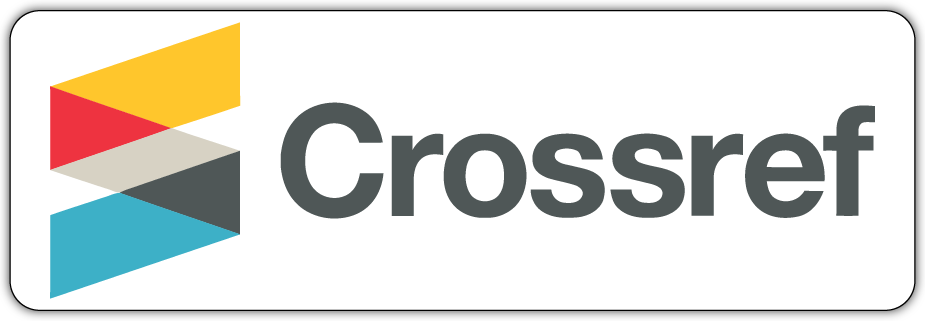Grammatical Cohesion in Durūsul Lugah Volume 1 and Its Implications for Arabic Language Learning
Abstract
Keywords
Full Text:
PDFReferences
Abrar, M. , & A. L. T. (2022). Kitaab Durusu Al-Lughah Al-‘Arabiyyah Wa Atsaruhu Fii Tadriis Al-Lughah Al-‘Arabiyyah ‘Alaa Munjiz Thaalibaat As-Shaf As-Sabi’“E” Fii Madrasah Tsanawiyyah Lilbanaat Bi Ma’had Ummul Quro Al-Islami Bogor. SHAWTUL ‘ARAB, 1(2).
Al Dilaimy, H. (1998). Reference in English and Arabic: A contrastive study. Retrieved from https://www.researchgate.net/publication/323187192
Al-Khawalda, M. (2002). Ellipsis in Arabic and English. International Journal of Arabic-English Studies, 3(1), 183–199. Retrieved from https://doi.org/10.33806/ijaes2000.3.1.12
Al-Liheibi. (1999). Aspects Of Sentence Analysis In The Arabic Linguistic Tradition, With Particular Reference To Ellipsis. Durham University.
Al-Shurafa, N. S. D. (1994). Text linguistics and cohesion in written Arabic. Art and Humanties, 2(7), 17–33.
Aminullah, F. C. A. (2020). تحليل مادة بها الناطقين لغير بية العر اللغة دروس كتاب .ف لدكتور الرحيم عبد على الكتاب تصميم ية نظر ل دكتور ناصر عبداهلل الغالى البحث العلمي. IAIN Kediri.
Azhar, M., Wahyudi, H., Karim, P., & Pamil, J. (2023). Arabic Language Learning Progress in Darussakinah Batu Bersurat Islamic Boarding School. Lisanan Arabiya: Jurnal Pendidikan Bahasa Arab, 6(2), 285–307. Retrieved from https://doi.org/10.32699/liar.v6i2.3499
Dimyati, D., Amri Syafri, U., & Hayyie Al-Kattani, A. (2021). Metode Pembelajaran Bahasa Arab Dalam Kitab Durusullughah Al-‘Arabiyyah Karya Dr. V. Abdur Rahim. Rayah Al-Islam, 5(02), 242–254. Retrieved from https://doi.org/10.37274/rais.v5i02.459
Flowerdew, J. (2012). Discourse in English language education. Routledge.
Halliday, M. A. K., & Hasan, R. (1976). Cohesion in english. Longman.
Hikmah, K., Abdullah, A. H., Amrullah, M., Fahmi, A. K., & Fakhiroh, N. (2023). The Pros and Cons of Durusul Lughah for Non-native Arabic Speakers (pp. 162–167). Retrieved from https://doi.org/10.2991/978-2-38476-052-7_18
Ilfa Naimah, Putri Kholida Faiqoh, & Karisma Yurista. (2023). Implementasi Penggunaan Kitab Durusullughah Pada Pembelajaran Maharah Qiro’ah di PPTQ Al-Ma’ruf. Muhadasah: Jurnal Pendidikan Bahasa Arab, 5(1), 14–23. Retrieved from https://doi.org/10.51339/muhad.v5i1.693
Khair, M., Firmansyah, Muh. G., Rosyidi, A. W., & Muhaiban, M. (2023). Tahlîl Al Kitâb Al Madrasy Li Al Lughah Al ‘Arbîyah Li Al Shaffi Al Sâb’i Li Wazârah Al Syûn Al Dînîyah ‘Âm 2020 ‘Ala Nazrîyah I’idâd Al Mawâd Al T’alîmîyah Li Rusydi Ahmad Tu’aimah. Al Mi’yar: Jurnal Ilmiah Pembelajaran Bahasa Arab Dan Kebahasaaraban, 6(1), 207. Retrieved from https://doi.org/10.35931/am.v6i1.1730
Laubaha, S. A., Otaya, L. G., Yasin, Z., Hula, I. R. N., Hairuddin, H., & Adam, M. Z. (2024). Pengembangan Bahan Ajar Mahāratul Kalām Berbasis Kearifan Lokal Provinsi Gorontalo. Al Mi’yar: Jurnal Ilmiah Pembelajaran Bahasa Arab Dan Kebahasaaraban, 7(1), 459. Retrieved from https://doi.org/10.35931/am.v7i1.3340
Miles, B. M., & Huberman, M. A. (1994). An expanded sourcebook: Qualitative data analysis. Sage publications.
Mochamad Afroni. (2023). Relevansi Kitab Durusulughah Al-’Arabiyyah Lighairin Nathiqina Biha Dalam Pembelajaran Bahasa Arab Di Ponpes Al Ikhwan Pemalang. Bashrah, 3(02), 73–85. Retrieved from https://doi.org/10.58410/bashrah.v3i02.755
Ramlan. (1976). Pedoman Penulisan Tata Bahasa Indonesia. Pusat Pembinaan dan Pengembangan Bahasa Departemen Pendidikan dan Kebudayaan.
Rizki, M., Hidayat, D. N., Husna, N., & Alek, A. (2022). Discourse Analysis of Grammatical Cohesion Devices in Student Explanation Texts. Eduvelop: Journal of English Education and Development, 6(1), 1–12. Retrieved from https://doi.org/10.31605/eduvelop.v6i1.1545
Rochmatunnisa, R. (2023). التدريبات في كتاب دروس اللغة العربية لغير الناطقين بها للدكتور ف. عبد الرحيم (دراسة حتليلية وصفية) Latihan pada Kitab Durusul Lughah Lighairi an-Nathiqina Biha Karya Dr. V. Abdurrahim.
Syamsudduha, S., Amir, J., & Wahida, W. (2019). Cohesion and Coherence in Indonesian Textbooks for The Tenth Grader of Senior High School. In Proceedings of the Seventh International Conference on Languages and Arts (ICLA 2018). Paris, France: Atlantis Press. Retrieved from https://doi.org/10.2991/icla-18.2019.75
Tamam, M. I., Syafni, H., Rosyidi, A. W., & Fitra, M. N. (2024). A Beginner Book For Arabic Basic User: Analysys Al-Lughah Al-Arabiyah Book Chapter One Based On CEFR Standart. Al Mi’yar: Jurnal Ilmiah Pembelajaran Bahasa Arab Dan Kebahasaaraban, 7(2), 816–825.
Waller, S. (2015). Cohesion is still not coherence, so what is. English Teaching in China, 6, 31–35.
Xhepa, O. (2016). The importance of Accurate Cohesion and Coherence in the Text.
Zakiyah. (2011). Kohesi dan Koherensi dalam Surat Al-Kahfi. Universitas Gadjah Mada, Indonesia.
DOI: http://dx.doi.org/10.35931/am.v8i1.4657
Refbacks
- There are currently no refbacks.
Copyright (c) 2025 Al Mi'yar: Jurnal Ilmiah Pembelajaran Bahasa Arab dan Kebahasaaraban

This work is licensed under a Creative Commons Attribution-ShareAlike 4.0 International License.
Al Mi'yar: Jurnal Ilmiah Pembelajaran Bahasa Arab dan Kebahasaaraban
Index by:
![]()
![]()
![]()
![]()
![]()
![]()
![]()
![]()
![]()
![]()

Publish by:
Program Studi Pendidikan Bahasa ArabSekolah Tinggi Ilmu Al-Qur'an AmuntaiContact us:
Address: Jl. Rakha Pakapuran, Amuntai Utara
Kabupaten : Hulu Sungai Utara
Kode Pos : 71471
Provinsi : Kalimantan Selatan
Email: jurnal.almiyar@gmail.com

Ciptaan disebarluaskan di bawah Lisensi Creative Commons Atribusi-BerbagiSerupa 4.0 Internasional.
___________________________________________________________________________________________________________________________________________________________________
Ciptaan disebarluaskan di bawah Lisensi Creative Commons Atribusi-BerbagiSerupa 4.0 Internasional.

 slot88
slot88








